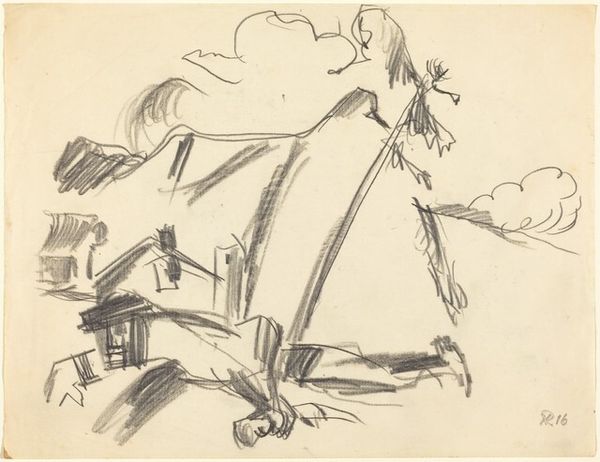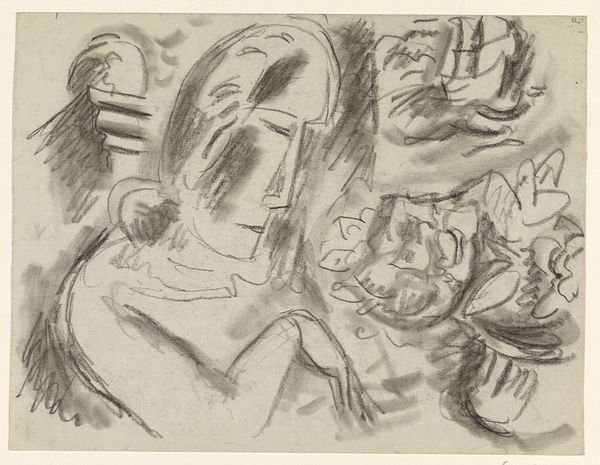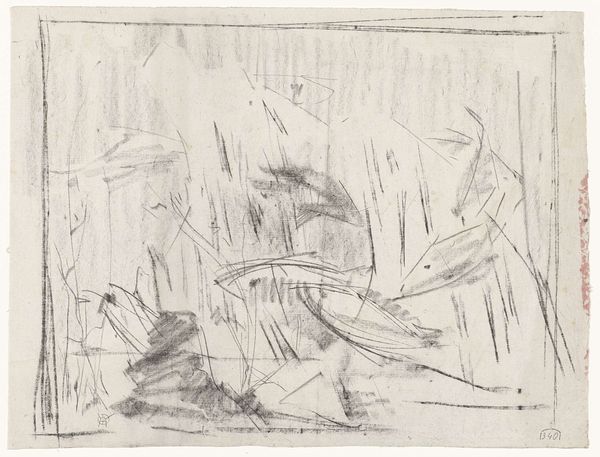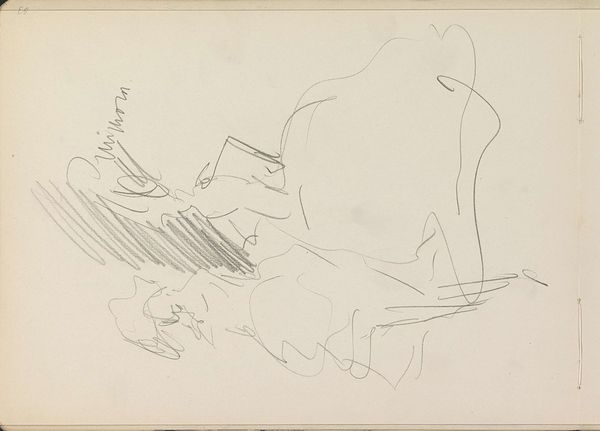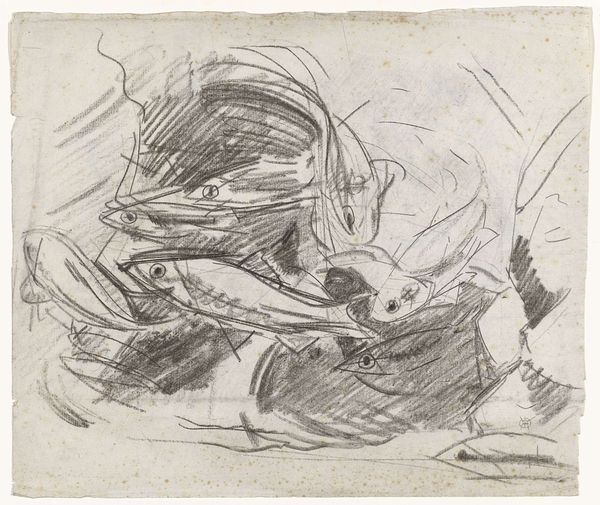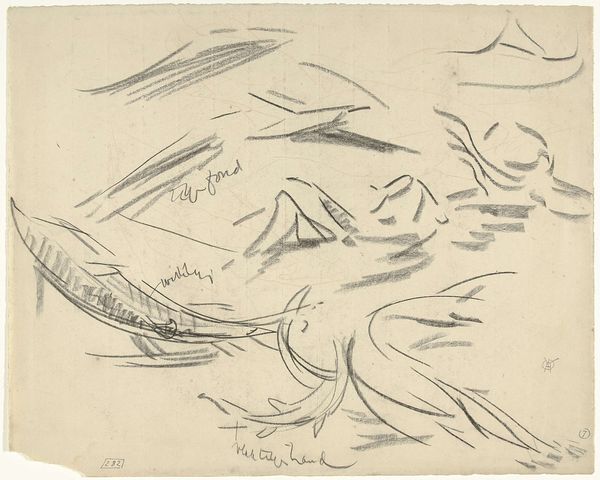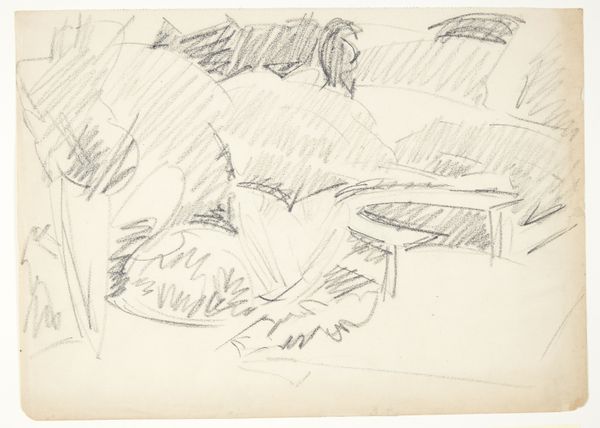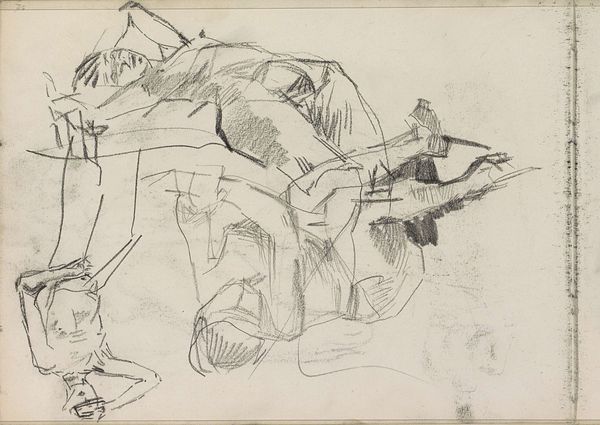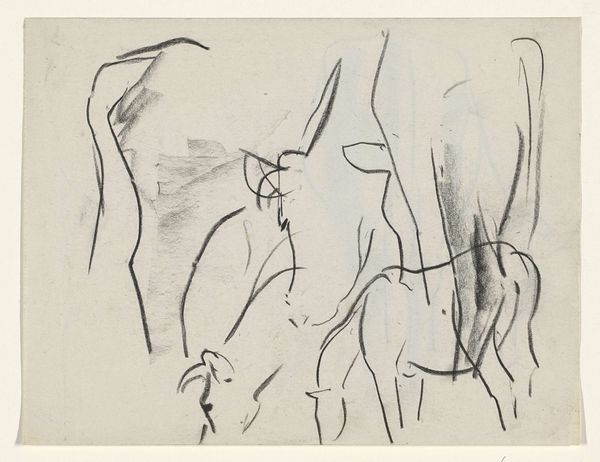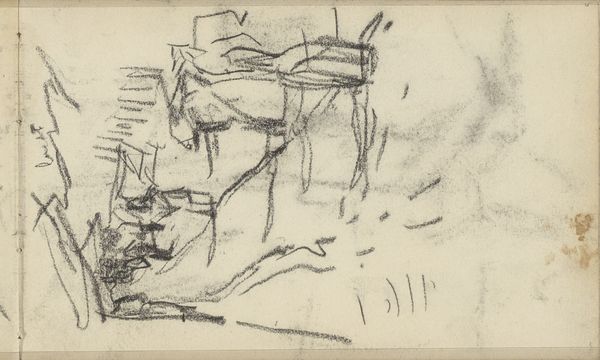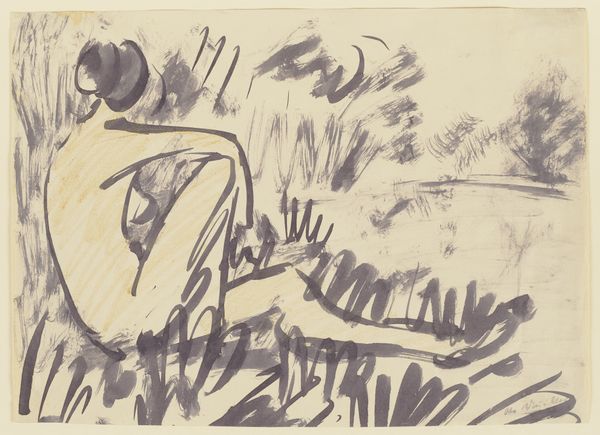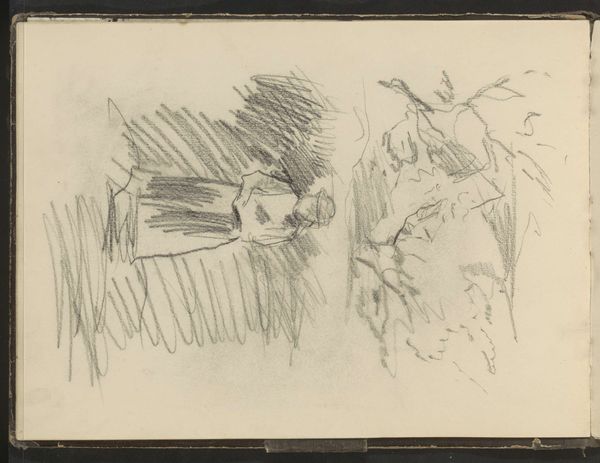
drawing, pencil
#
drawing
#
light pencil work
#
quirky sketch
#
pen illustration
#
pen sketch
#
figuration
#
personal sketchbook
#
ink drawing experimentation
#
pen-ink sketch
#
pencil
#
sketchbook drawing
#
storyboard and sketchbook work
#
sketchbook art
Dimensions: height 347 mm, width 433 mm
Copyright: Rijks Museum: Open Domain
Curator: Welcome. Today, we are looking at Gerrit Willem Dijsselhof's "Studie van een meerval en andere vissen," created sometime between 1876 and 1924. It's a pencil drawing. Editor: My initial response is one of curious bewilderment. It seems chaotic, like an unfinished experiment on the page. There is such a stark contrast between the almost finished fish at the bottom and the lines around it. Curator: Indeed. What we are seeing is not intended to be a polished rendering, but rather a study of forms. Focus on the varying degrees of shading, the different weights of the lines, and the deliberate ambiguity. Semiotically, these are not simply "fish;" they are the artist grappling with shape and texture. Editor: Right, but that “study” is also implicitly tied to the context of art-making at that moment. It appears to echo the artistic interest in scientific documentation married with aesthetic form during the rise of Naturalism. The “realism” of capturing the fish has a parallel with colonialism, considering who had the privilege and resources to engage in such studies. The act of depicting aquatic life wasn't just observation, it could have political undertones linked to resource extraction or power dynamics in colonized territories. Curator: That’s a reach, I think. Though it's tempting to graft contemporary themes onto everything, the aesthetic interest in marine biology doesn't necessitate an inherent colonial dimension. Dijsselhof, immersed in Symbolism, would see fish more for their suggestive, evocative qualities. Consider how the pencil sketches—these ghost-like traces—hint at ethereal and even spiritual notions. Editor: True, but it can be both/and, can't it? Theosophy was at its peak, influencing art and culture to look at hidden meanings. But at the same time, scientific classifications served to categorize and exploit non-Western populations. These seemingly contradictory agendas were simultaneously swirling. So while the artist may have been engaging on a formal or symbolic level, its reception could equally highlight colonial ideologies. Curator: Ultimately, regardless of political narratives, Dijsselhof displays mastery in his handling of graphite. We are privileged to witness him breaking down form into basic components. Look, here we have something more resolved versus unfinished lines elsewhere. Editor: Yes. Perhaps a demonstration of how various forms take on meaning through the context they inhabit. Thanks for making visible some potential layers within this study. Curator: And thank you for the stimulating perspectives!
Comments
No comments
Be the first to comment and join the conversation on the ultimate creative platform.
